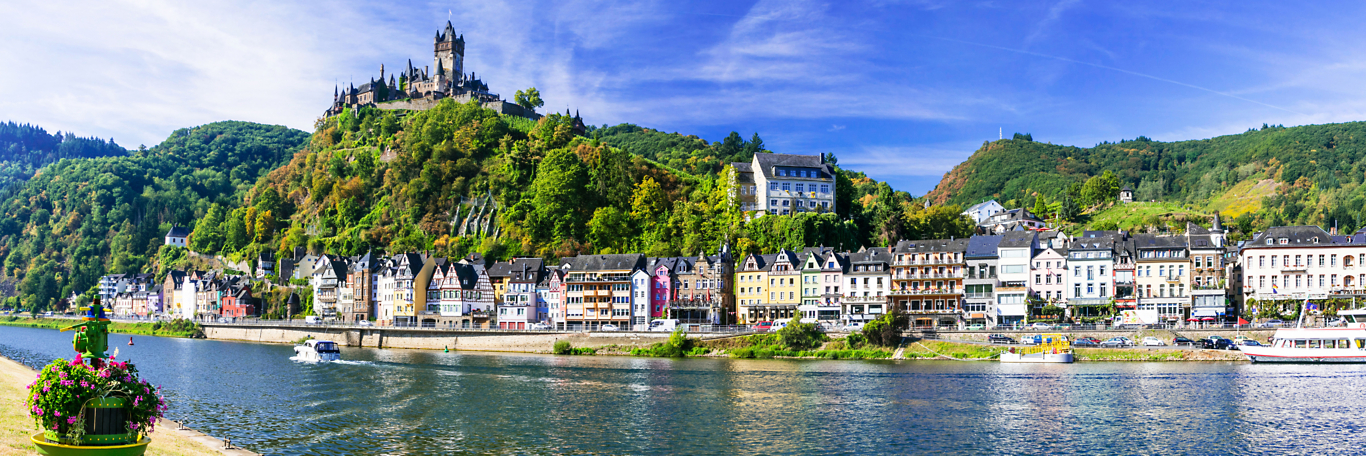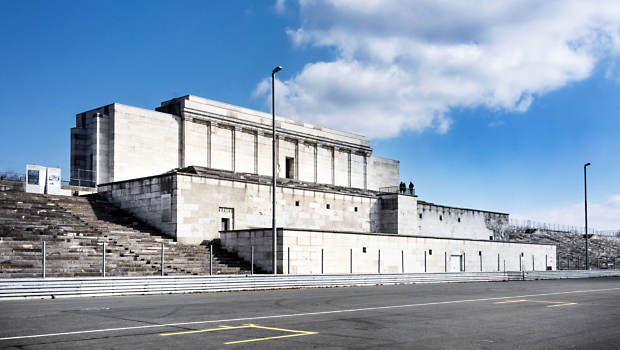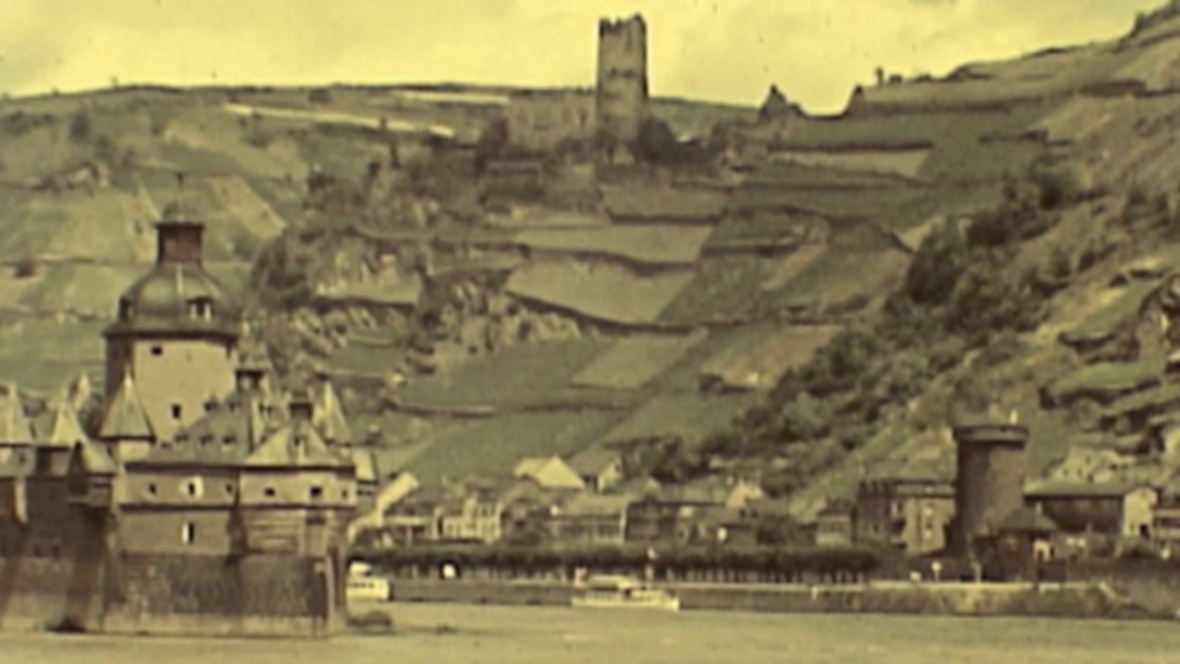You’re receiving this message because your web browser
is no longer supported
We recommend upgrading your browser—simply click the button below and follow the instructions that will appear. Updating will allow you to accept Terms and Conditions, make online payments, read our itineraries, and view Dates and Prices.
To get the best experience on our website, please consider using:
- Chrome
- Microsoft Edge
- Firefox
- Safari (for Mac or iPad Devices)

germany
Compare Our Trips

Spend 10 days in Germany on
The Great Rivers of Europe
River Cruise


Spend 7 days in Germany on
Romance of the Rhine & Mosel
River Cruise

Spend 6 days in Germany on
Christmas Markets Along the Rhine
River Cruise

Spend 5 days in Germany on
Christmas Markets Along the Danube
River Cruise
Spend 5 days in Germany on our
Post-trip Extension
Munich, Germany & Salzburg, Austria
Munich, Germany & Salzburg, Austria

Munich, Germany

Compare Trips
Add Trip
including international airfare
per day
*This information is not available for our trip extensions. You must reserve the main trip to participate on this extension.
**This information is not currently available for this trip. Please check back soon.
You may compare up to Adventures at a time.
Would you like to compare your current selected trips?
Yes, View Adventure ComparisonGermany: Month-By-Month
There are pros and cons to visiting a destination during any time of the year. Find out what you can expect during your ideal travel time, from weather and climate, to holidays, festivals, and more.
Germany in March-May
Spring brings with it more sunshine, warmer days, and a colorful blanket of blooms to Germany. Occasional rain showers can also be expected, so be sure to dress in layers and carry an umbrella. Locals take advantage of the milder temperatures and can be found in parks and open-air markets throughout the region. And since the summer crowds have yet to arrive, springtime visitors can also enjoy these outdoor activities with fewer crowds to contend with.
Holidays & Events
- March & April: Easter celebrations take place across the largely Christian region.
- April 30: Maifest. The end of winter is celebrated in Germany by chopping down a tree and creating a Maypole by painting, carving, and decorating it.
Watch this film to discover more about Germany
Germany in June-August
Summer ushers in warmer weather, and more sunshine. Throughout the region, the daytime temperatures average in the 60s and 70s and lows in the 50s. You can expect the warmest temperatures in July, but be sure to pack accordingly as temperatures can drop into the 50s at night. Also be prepared for more precipitation in June and July when thunderstorms are common. Take advantage of more daylight—up to 15 hours in the summer—during a walk through any of the region’s picturesque gardens and parks. Just expect more crowds.
Holidays & Events
- June 21: The Midsummer solstice is celebrated on the longest day of the year. Festivities include ship processions that make their way down the Danube and colorful firework shows.
- Mid to late June: Kieler Woche—the world's biggest sailing party—features hundreds of regattas, ship parades, and historic vessels in the city of Schleswig-Holstein
Must See
Wine Festival season begins in August, and is marked throughout the region with special tastings, fireworks, and parades helmed by a Wine King & Queen. The rolling hills of the Wachau Valley are especially lush during the harvest season.
Watch this film to discover more about Germany
Germany in September-November
The hills are alive with the colors of autumn, as the changing leaves paint Germany’s slopes a majestic patchwork of yellow, orange, and red. Nature walks are a perfect pastime during the fall months, and with fewer tourists, you’ll have more opportunity to enjoy the scenery with less crowds around. As we head into November, light flurries of snow in the more elevated parts of the region hint at what's to come in December.
Holidays & Events
- Mid-September: Erntedankfest—an annual festival held in rural German towns—celebrates the harvest season with seasonal food, pumpkin festivals, and more.
- November 11: On St. Martin’s Day, children engage in trick-or-treating-like activities, similar to Halloween celebrations in the United States.
Must See
Mid-September-early October heralds Oktoberfest—the raucous folk festival of lederhosen, pretzels, and beer—is synonymous with German culture and is held annually in Munich.
Watch this film to discover more about Germany
Germany in December
Usually beginning in December, heavy snowfall colors the Alpine region a Christmassy white. During the night, temperatures may hover around zero degrees—perfect weather for hot chocolates and mulled wines (which you may pick up at the Christmas markets that begin lining the enchanting streets this time of year).
Holidays & Events
- December 25: Christmas Day
Must See
During the holiday season, delightful Christkindlmarkts (Christmas markets) begin sprouting up throughout the streets of Germany. Offering anything from handmade garments and crafts to festive holiday treats, including pastries and mulled wines, these markets add just the right amount of holiday spirit and flare. Gigantic Christmas trees are often on display in town squares and the glimmer of decorative ornaments shines through many of the windows you'll pass by.
Watch this film to discover more about Germany
Average Monthly Temperatures
High Temp Low Temp
Germany Interactive Map
Click on map markers below to view information about top Germany experiences
Click here to zoom in and out of this map
*Destinations shown on this map are approximations of exact locations
Germany’s Storied Rivers
From the mighty Rhine and picturesque Mosel, to the bustling Main and the romantic blue Danube, Germany is fortunate to be traced with some of the world’s greatest waterways—natural resources the country has used to its advantage to become one of the wealthiest economies on Earth.
Over the centuries, Germany grew and flourished along the riverbanks, due in large part to the rivers themselves. Even today, Germany has the world’s most well-developed inland navigation system—the rivers not only link the country's major commercial hubs and charming hideaways, but also connect Germany to other European nations. This enhanced its commerce and trade reach—the rivers carrying the country's wares near and far. Thanks to German innovation, the rivers have also been used as a primary source of hydroelectric generation. And last but not least, travelers flock here to discover the country's beauty while plying the rivers’ scenic waters.
Explore Germany's rivers with Grand Circle Cruise Line on:
Cologne Cathedral

Cologne awaits like a history book come to life, the filigreed spires of its famous cathedral rising above the cityscape like twin sentinels. A stroll through its streets reveals museums full of fine art, shops brimming with excellent chocolate, and even an ancient Roman gate. But it is the city’s namesake cathedral that beckons all travelers, like a Gothic siren.
Construction of the cathedral—known as the Dom—began in 1248 and, after seven centuries, was declared completed in 1880. United by their faith and the vision of the cathedral’s original plans, generations of builders contributed to this architectural masterpiece.
This UNESCO World Heritage Site miraculously escaped the majority of World War II damage that devastated the rest of the city (and Germany)—in fact, there's evidence that Allied forces were specifically ordered to preserve the beauty of this structure. The largest Gothic cathedral in northern Europe, the Dom boasts incredible stained-glass windows, an ornate gold altar shrine, and the intricate detail traditional for 14th-century Gothic churches.
Explore Cologne with Grand Circle Cruise Line on:
Nuremberg

Along the banks of the Danube lies Bavaria’s second-largest city—richly-diverse Nuremberg. Franconia’s unofficial capital offers visitors a wide array of delights, from its energetic night scene and lively beer houses, to its yearly transformation into a magical winter wonderland during Christmas market season.
The vibrant modern city is also known for its darker past and the role it played in promoting Nazi propaganda. The ostentatious display at each of the Nazi party rallies once held in Nuremberg’s Zeppelin Field were meant to showcase Adolf Hitler’s burgeoning power. Nuremberg was chosen because of its culture-rich past and the fact that it was, and remains, the country’s major train hub. The Zeppelin Field was selected as the rally site because of its size (larger than twelve American football fields combined).
Architect Albert Speer designed a complex mimicking the classical aesthetic of the Romans—complete with imposing columns and crackling fire cauldrons. The final—and largest—rally was held in September of 1938. A crimson sea of Nazi flags rippled amidst a crowd of nearly 200,000. Then in the spring of 1945, U.S. soldiers tore down the gaudy swastika that once crowned the grandstand. After the war, Nuremberg was famously chosen as the site for the war crimes trials.
Today, Nuremberg acknowledges the crimes of its past, while keeping its eyes on its bright present … and future. Every summer, rock music now fills the expanse of Zeppelin Field while in the winter stalls brimming with handmade crafts and sweetly spiced treats line the city’s welcoming streets.
Explore Nuremberg with Grand Circle Cruise Line on:
Berlin
Scarred by not one but two World Wars, tarnished by the whims of a murderous tyrant, and riven for 28 years by a cruel wall—Berlin has endured more than its share of turmoil through the years. Berlin makes no attempt to gloss over its history. On the contrary, many of its most notable sites—including the Holocaust Memorial, the Stasi Prison, and the Topography of Terror (built on the site of the former SS headquarters)—can be explored free of charge, as part of Germany’s attempt to convey its hard lessons to the wider world. But the city that hosted the Third Reich and the Soviets refuses to be wholly defined by the darker shades of its past.
In the early 20th century, Berlin was a haven for architects, painters, and filmmakers—and the city today hews very closely to that 100-year-old version of itself. Since the 1990s, cheap rents and open-mindedness have attracted artists of all types to Berlin’s borders. Alternative lifestyles, rock-and-roll attitudes, an international food scene, and vibrant street art are now hallmarks of this free-wheeling metropolis. Even the somber remnants of the Berlin Wall have gotten a makeover—muralists were commissioned in 1990 to decorate a mile-long section (known as the East Side Gallery) to commemorate the joy of reunification.
Fans of the finer things also find plenty to love in multi-faceted Berlin: Museum Island is home to works of art that span the centuries (as well as the continents), and is crowned by Berlin Palace—an eye-catching example of Baroque style. Nearby, the rambling Tiergarten (Berlin’s Central Park) entices outdoor enthusiasts with miles of tree-covered trails and surprises history buffs with notable Prussian sculptures.
Explore Berlin with Grand Circle Cruise Line on:
Trier's Porta Nigra

Trier—Germany’s oldest city—has been capturing people’s imaginations for millennia. There have been settlements here since the third millennium before Christ; Roman Emperor Augustus founded a thriving city here in 15 BC. Ancient Trier was both a scenic and strategic location—being situated on the Mosel River helped the city to control all commerce coming to and from the Mosel and the Rhine rivers. It eventually grew into a proper Roman city of great wealth and importance. In fact, the post ultimately became known as Roma Segunda, or Second Rome, for its opulence.
Eventually, surrounding Germanic tribes posed a large enough threat for the Romans to build a city wall around AD 200. It was four miles long and originally had five iron gates, in an attempt to protect Trier from the invasion that inevitably took place in AD 275.
Today, evidence of ancient Trier remains in its imposing Porta Nigra (“Black Gate”), the largest surviving city gate from that ancient Roman wall. In Trier’s pedestrian-only Market Square you can admire the central fountain built in 1595, a massive basilica built by Constantine in AD 310, and St. Peter’s Cathedral—built in the fifth century. Other Roman sites include the remains of baths and a 25,000-seat amphitheater. History enthusiasts can find even more to discover in the archaeological museum, whose vast collection tells the story of Trier from ancient times to the present day.
Explore Trier with Grand Circle Cruise Line on:
Reichsburg Cochem Castle

Pastel buildings reflect in the waters of the Mosel River, welcoming you to one of Germany’s most-visited towns—Cochem. Twisting medieval streets offer explorers the charming sight of half-timbered houses, medieval gates, and welcoming restaurants serving up local Riesling alongside hearty Germany fare. And overlooking this storybook scene is an even more enchanting vision to behold—the fairytale Reichsburg Cochem castle.
Believed to have been originally constructed sometime in the eleventh century, the castle is perched impossibly on a cliff overlooking the Mosel River. Burned to the ground by King Louis XIV of France in 1689 during the War of the Palatine Succession, the castle remained derelict until 1868, when it was purchased by Louis Ravene, a Berlin entrepreneur who converted it into a summer home for himself and his family. In 1978, ownership of the castle fell into the hands of the city of Cochem, which has since opened it to the public.
Explore Cochem with Grand Circle Cruise Line on:
Featured Reading
Immerse yourself in Germany with this selection of articles, recipes, and more
ARTICLE
ARTICLE
Learn how to make classic German potato salad with this recipe.
Recipe: German Lebkuchen

Warm, spicy, sweet, and soft—German gingerbread, or lebkuchen—is synonymous with the holidays and a staple of the country’s annual Christmas markets. Germans hold this beloved treat in high regard and traditional recipes, especially from Nuremberg, where the cookie was invented, are often a tightly guarded secret. Fortunately for you, we’re happy to share this one!
Ingredients for lebkuchen:
3 cups all-purpose flour, plus extra for kneading
1¼ teaspoons ground nutmeg
1¼ teaspoons ground cinnamon
½ teaspoon ground cloves
½ teaspoon ground allspice
1 egg
¾ cup light brown sugar
½ cup honey
½ cup molasses
Ingredients for glaze:
1 cup confectioner's sugar
2 Tablespoons water
1 Tablespoon lemon juice
Preparation:
- Preheat the oven to 350°F. Grease two baking sheets or line with parchment paper.
- Sift together the flour, nutmeg, cinnamon, cloves, and allspice. Set aside.
- Beat the egg and sugar together on medium speed until light and fluffy (approximately 2 minutes). Scrape whipped eggs down the bowl.
- Beat in the honey and molasses until completely combined.
- On low speed, stir in dry ingredients until just combined.
- Remove the dough from the bowl and place on a well-floured surface. Knead, adding more flour as you go, until a stiff dough forms.
- Wrap the dough in plastic wrap and chill until firm (from 2 hours to overnight).
- On a well-floured surface, roll out the dough into a 9x12-inch rectangle. Cut into 18 3x2-inch rectangular lebkuchen. Bake for 10-12 minutes.
- Transfer the lebkuchen to a wire rack and let cool. Whisk together confectioner’s sugar, water, and lemon juice, then brush or gently spread on top of the lebkuchen.
- Allow glaze to firm, and then store the lebkuchen in an airtight container at room temperature.
Total Time: 2 hours, 45 minutes
Servings: 18 lebkuchen
Get a taste of the holidays any time of year with this recipe for traditional German lebkuchen, or gingerbread.
Recipe: German Potato Salad

Courtesy of Epicurious
Ingredients:
2 1/4 pounds potatoes (waxy variety, such as Yukon Gold)
4 slices bacon
2 1/2 cups chicken broth
1/4 cup white wine vinegar
1 cup onions, diced
1 teaspoon salt, or to taste
1 teaspoon sugar, or to taste
1/4 teaspoon ground white pepper
1/4 cup vegetable oil
2 tablespoons mild brown mustard
1/2 bunch chives, snipped
Preparation:
- Cook the potatoes in simmering salted water until just tender, about 15-18 minutes. Drain and dry. While the potatoes are still hot, remove the skins and slice the potatoes 1/2-inch thick.
- While the potatoes are cooking, prepare the dressing. Cook the bacon over medium-high heat until the fat has rendered and the bacon is crisp. Remove the bacon to a plate with a slotted spoon, reserving the bacon fat in the pan; crumble the bacon into small pieces, and reserve.
- Bring the chicken broth, vinegar, onions, salt, sugar, and pepper to a boil.
- Combine the oil, rendered bacon fat, and mustard with the warm potatoes. Pour the boiling broth-vinegar mixture over the potatoes. Toss in the crumbled bacon and chives.
- The salad may be served warm, at room temperature, or chilled.
Total Time: 35 minutes
Servings: 8
See the experts make German Potato Salad in this film:
Learn how to make classic German potato salad with this recipe.
Traveler Photos & Videos
View photos and videos submitted by fellow travelers from our Germany adventures. Share your own travel photos »



